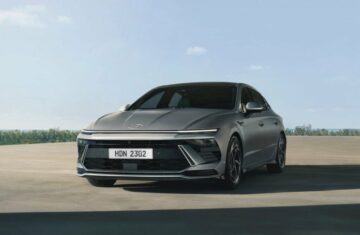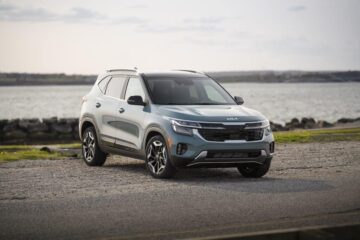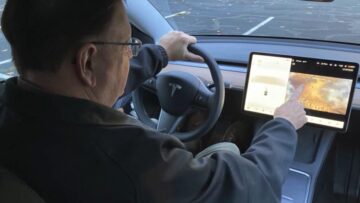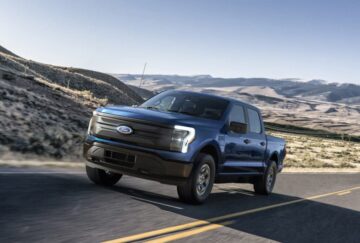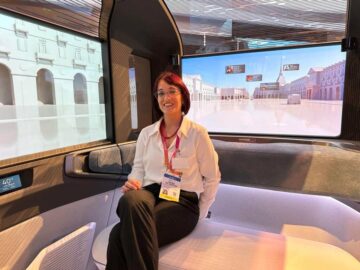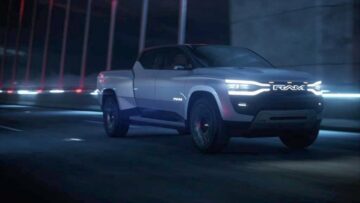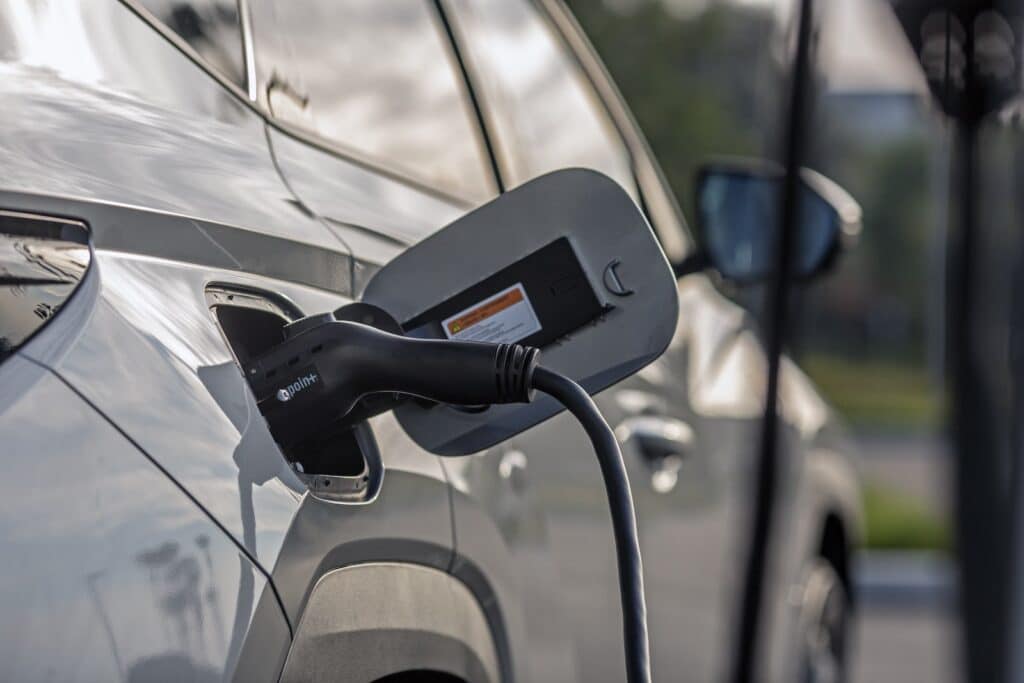
Desiring the best things in life means paying more than you might want. But in the case of the 2023 Hyundai Tucson Limited Plug-in Hybrid AWD, it’s well worth it. Opting for the priciest Tucson is no exercise in vanity, but rather a desire for more power and superior fuel efficiency compared to its internal combustion engine sibling.
Overview
The compact Tucson SUV carries on unchanged for 2023, having been redesigned for 2022. Certainly, the makeover worked, as sales rose nearly 14% last year from 2021. The Tucson has something for everyone, with a choice of a conventional internal combustion gas engine, a conventional hybrid or a plug-in hybrid. Conventional gas engines come with front- or all-wheel drive hybrid models come exclusively with all-wheel drive.
Gas models are offered in ascending SE, SEL, XRT, N and Limited trims, while the hybrid comes in Blue Hybrid, SEL Convenience, and Limited trim.
We tested the plug-in hybrid model, which is the most expensive Tucson. It comes in SEL and Limited models, the latter being the trim that we tested.
Exterior

The Tucson wears a distinctively fresh face that the company calls “parametric design.” Certainly, the playful interplay of triangular shapes is interesting and distinctive, with LED headlights that blend with the similar shaped grille texture, causing them to visually disappear until used. If the window shape is a little too familiar in its shape, the body’s side sculpting endows it with dynamic sporting appearance for what is, at its core, a box. But its overall appearance calls to mind the larger Santa Fe without mimicking it, wearing similar muscular haunches over the wheels and finished with a metallic garnish to the rear side windows.
The Tucson offered stateside is the long-wheelbase model in overseas markets, which also have a choice of a short-wheelbase Tucson not available here.
Interior
Offering to 108.2 cubic feet of passenger volume, with more than sufficient head and leg room, although the wide center console does prove intrusive, with a hard plastic construction that makes for an uncomfortable perch for the driver’s right leg. Second-row seating is about what you’d expect for the class, although it’s slightly less in hybrid models.

Cargo capacity is rated at 31.9 cubic feet, expanding to 66.3 cubic feet with the seats folded. Payload is rated at 1,056 pounds; roof load capacity is 220 pounds.
Given the Tucson’s recent redesign, it’s little surprise that its cabin possesses a contemporary vibe with a definite tech edge. A pushbutton automatic transmission and a touch-sensitive climate control panel not only feel modern, but lend the cabin a premium feel.
Assembly quality is impressive, as the instrument panel wraps into the door panels, aligning perfectly with each other. Most automakers have difficulty pulling this off, but Hyundai has managed to accomplish it. Bravo.
Powertrain
With 261 horsepower, the Tucson PHEV’s 1.6-liter Turbocharged double-overhead-cam 4-cylinder has an extra 74 horsepower over the standard 187-horsepower 2.5-liter four. The hybrid driveline delivers its power to all four wheels through a 6-speed automatic transmission thanks to a 13.8-kWh battery pack and 66.9-kW electric motor. Electric driving range is EPA-rated at 33 miles, and combined city/highway mileage comes in at 35 mpg according to the Feds, 10 mpg better than then conventional gas-powered AWD Tucson.
Towing is rated at 2,000 pounds with trailer brakes, 1,650 pounds without them.
Safety and Technology

The National Highway Traffic Safety Administration has not crashed tested the plug-in hybrid Tucson, as the government has just started crash testing battery-equipped cars. Other Tucson AWD models rate 4 stars overall, but 5 stars in front and side crash tests, and four stars in rollover protection. The Insurance Institute for Highway Safety rates it a “Top Safety Pick +,” its top designation, with “Good” ratings in all crash tests, and an “Acceptable” rating for its headlights.
And there’s a host of driver-assistance systems that are genuinely helpful, such as adaptive cruise control, automatic emergency braking, blind-spot monitoring, and lane keeping assist. Out Limited test vehicle came with additional features lower trim levels lack, including surround-view monitor as well as parking sensors and a camera that provides a view of your vehicle’s blind spot on the same side of the car as the turn signal. Unlike a similar system used by Honda, this one provides views on either side of the car, depending which turn signal is activated.
When it comes to tech, an 8-inch screen is standard; a 10.3-inch touchscreen is also offered. Both come with standard Apple CarPlay and Android Auto capability, but if you want wireless Apple CarPlay, you’ll have to make do with the smaller screen.
Driving Impressions

Upon startup, you’ll always find the Tucson PHEV set to the Eco driving mode, which makes for reluctant ride, as the vehicle does it best to play the economical compact. It will be enjoyed by those who resent even the smallest thrill in life. Most drivers will appreciate flipping the console-mounted driving mode toggle switch, unleashing the Sport driving mode, which feels far more natural and relaxed, unleashing the full potential of the driveline.
And the electric mode is much appreciated, adding a quiet, refined driving experience that’s appreciated. That said, its 33-mile range is lower than that of its competitors, including the Toyota Prius Prime and the Ford Escape Plug-In Hybrid.
Its accurate steering and overall poise make it well-suited for the business of driving. No, it’s no sports-tuned SUV, but it has enough moxie to make for an interesting ride. The suspension is firm, but does a fairly good job of soaking up the rough stuff. Body lean is well controlled, and the ride proves surprisingly quiet.
It’s an impressive performance for a mainstream compact SUV.
2023 Hyundai Tucson Limited PHEV AWD Specifications
| Dimensions | L: 182.3 inches/W: 73.4 inches/H: 66.3 inches/Wheelbase: 108.5 inches |
| Weight | 4,191 pounds |
| Powertrain | 1.6-liter turbocharged DOHC 4-cylinder, 13.8 kWh electric motor, 6-speed automatic transmission and all-wheel drive |
| Fuel Economy | 80 mpg-e combined/35 mpg combined |
| Performance Specs | 603 horsepower and 627 pound-feet of torque |
| Price | $44,760; excluding a $1,335 destination charge. |
| On-Sale Date | Now |
Wrap Up
The Hyundai Tucson Plug-In Hybrid plays in a tough segment against strong competitors with longer EV range. But the Hyundai has its act together, and overall places near the top in its class, thanks to its blend of performance, fuel economy, modern design and decent on-road performance. Yes, this model is fairly pricey, but most of the Tucson models offer a compelling value story, one that’s well worth considering. In fact, it’s among the best you can buy in its class.
2023 Hyundai Tucson PHEV – Frequently Asked Questions
What is the range of the 2023 Tucson PHEV?
It will run 33 miles on electricity, and 420 miles overall, according to the EPA.
How long do Hyundai PHEV batteries last?
Hyundai dealers say that the battery will need replaced after 150,000 miles or 15 years, whichever comes first.
What competes with the Hyundai Tucson PHEV?
The Toyota RAV4 Prime, Kia Sportage PHEV, and Ford Escape PHEV.
- SEO Powered Content & PR Distribution. Get Amplified Today.
- PlatoData.Network Vertical Generative Ai. Empower Yourself. Access Here.
- PlatoAiStream. Web3 Intelligence. Knowledge Amplified. Access Here.
- PlatoESG. Automotive / EVs, Carbon, CleanTech, Energy, Environment, Solar, Waste Management. Access Here.
- BlockOffsets. Modernizing Environmental Offset Ownership. Access Here.
- Source: https://www.thedetroitbureau.com/reviews/a-week-with-2023-hyundai-tucson-limited-phev/
- :has
- :is
- :not
- $UP
- 000
- 056
- 1
- 10
- 13
- 15 years
- 15%
- 2021
- 2022
- 2023
- 220
- 31
- 33
- 420
- 66
- 8
- 9
- a
- About
- accomplish
- According
- accurate
- Act
- activated
- adding
- Additional
- administration
- After
- against
- aligning
- All
- also
- Although
- always
- among
- an
- and
- android
- Apple
- appreciate
- appreciated
- ARE
- AS
- asked
- assist
- At
- auto
- automakers
- Automatic
- available
- batteries
- battery
- BE
- been
- being
- BEST
- Better
- Bit
- Blend
- blind
- Blue
- body
- both
- Box
- Bravo
- Bureau
- business
- but
- buy
- by
- Calls
- came
- camera
- CAN
- capability
- Capacity
- car
- cars
- case
- causing
- Center
- certainly
- charge
- choice
- class
- Climate
- combined
- come
- comes
- company
- compared
- compelling
- competes
- competitors
- considering
- Console
- construction
- contemporary
- control
- control panel
- controlled
- convenience
- conventional
- Core
- Crash
- Crashed
- cruise
- delivers
- Depending
- Design
- designation
- desire
- destination
- Difficulty
- disappear
- distinctive
- do
- does
- Door
- drive
- drivers
- driving
- dynamic
- each
- economy
- Edge
- efficiency
- either
- Electric
- electric motor
- electricity
- emergency
- Engine
- Engines
- enough
- EPA
- escape
- EV
- Even
- everyone
- excluding
- exclusively
- Exercise
- expanding
- expect
- expensive
- experience
- extra
- Face
- fact
- fairly
- familiar
- family
- far
- Fe
- Features
- Feds
- feel
- Feet
- Find
- Firm
- First
- For
- Ford
- four
- frequently
- fresh
- from
- from 2021
- front
- Fuel
- fuel efficiency
- full
- GAS
- good
- good job
- Government
- Hard
- Have
- having
- head
- helpful
- here
- Highway
- highway safety
- host
- HTTPS
- Hybrid
- hybrid model
- Hyundai
- if
- impressive
- in
- Including
- Institute
- instrument
- insurance
- interesting
- internal
- into
- IT
- ITS
- Job
- jpg
- just
- keeping
- Kia
- Lack
- Lane
- larger
- Last
- Last Year
- Led
- LEND
- less
- levels
- Life
- Limited
- little
- load
- Long
- longer
- lower
- Mainstream
- make
- MAKES
- managed
- Markets
- max-width
- means
- might
- mind
- mixed
- Mode
- model
- models
- Modern
- Monitor
- monitoring
- more
- most
- Motor
- moxie
- much
- National
- Natural
- Near
- nearly
- Need
- no
- of
- off
- offer
- offered
- on
- ONE
- only
- opting
- or
- Other
- out
- over
- overall
- overseas
- Pack
- panel
- panels
- parking
- paying
- performance
- pick
- Places
- plastic
- plato
- Plato Data Intelligence
- PlatoData
- Play
- plays
- potential
- pounds
- power
- Premium
- Prime
- protection
- Prove
- proves
- provides
- pulling
- quality
- range
- Rate
- rated
- Rates
- rather
- rating
- ratings
- recent
- redesign
- refined
- replaced
- Ride
- right
- rollover
- roof
- Room
- ROSE
- ROW
- Run
- Safety
- Said
- sales
- same
- Santa
- say
- Screen
- segment
- sensors
- set
- Shape
- shaped
- shapes
- side
- Signal
- similar
- smaller
- smallest
- solely
- something
- Sport
- Spot
- standard
- Stars
- started
- startup
- steering
- Story
- strong
- such
- sufficient
- superior
- surprise
- suspension
- SUVs
- Switch
- system
- Systems
- tech
- test
- tested
- Testing
- tests
- than
- thanks
- that
- The
- the cabin
- Them
- then
- things
- this
- those
- Through
- to
- together
- too
- top
- Touchscreen
- tough
- toyota
- traffic
- trailer
- TURN
- unlike
- until
- used
- value
- VANITY
- vehicle
- Vibe
- View
- views
- volume
- want
- we
- week
- WELL
- What
- What is
- which
- while
- WHO
- wide
- will
- windows
- wireless
- with
- without
- worked
- worth
- year
- years
- yes
- yielding
- you
- Your
- zephyrnet

